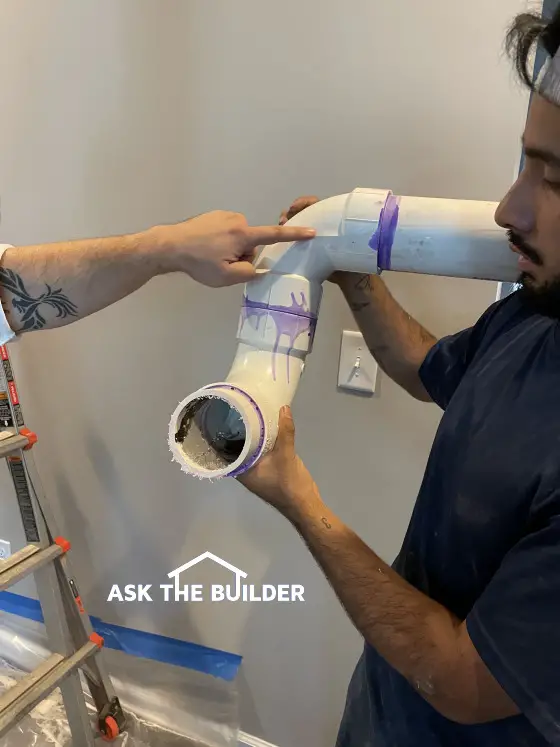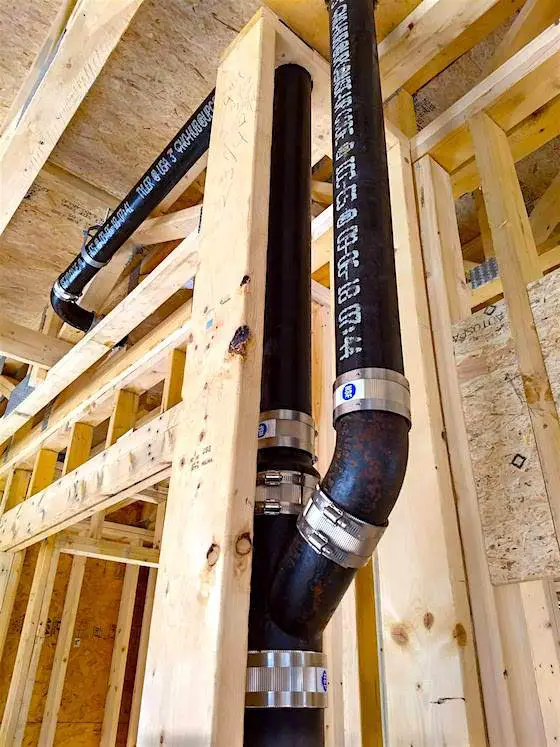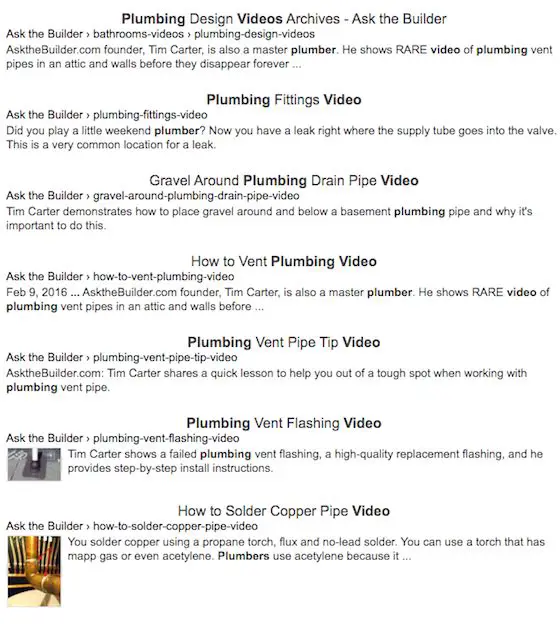Installing Plumbing Drain Pipes

Installing Plumbing Drain Pipes | This configuration of pipes may look odd to you and you think it’s wrong, but it’s not. There was never a clog here in eight years. Copyright 2021 Tim Carter
Installing Plumbing Drain Pipes - It's Somewhat Easy
I’ve been a master plumber since 1981. I’ve always loved doing plumbing because it’s a very interesting three-dimensional challenge when it comes to installing drain, waste, and vent (DWV) piping in a new home or a large remodeling job. Because I was also the lead carpenter and builder on my jobs, I was able to think ahead to ensure that all the framing and rough lumber was installed so it would not have to be butchered to get the pipes in.
Two weeks ago, Amanda, who lives in South Carolina, reached out to me. She wanted to know how she could get money from the original plumber who put in the drain pipes in her home. Amanda got some bad advice from some other plumber or remodeler who told her a toilet drain pipe had been installed wrong by the original plumber.
Amanda paid the new plumber to cut out the perfectly fine pipes and install new ones with more gentle bends in them. What a shame she wasted so much money! She could have spent less than $50 and arranged a simple phone call with me to ask me if she was getting good advice. But that’s water over the dam.
Amanda could have also read my very short PDF document about Best Practices for Installing PVC Drain and Vent Pipe. It's an instant-download product and less than $15! What a shame she didn't know about it as she would have instantly discovered her pipes were fine.
Here was Amanda’s situation. The toilet drain pipe ran in between two floor joists for about five feet. It then turned down using a normal 90-degree fitting, some call it a short bend L, and immediately connected to a sweep 90-degree fitting that was rotated 90 degrees so the toilet waste could continue its journey to the sewage plant running under the floor joists but now perpendicular to the joists.
She was told the short 90 was improper. I asked her if she had ever had a clog in the eight years since the house was built. Her answer was, “No.”

I installed this cast iron in my daughter's new home. Those band clamps make it so easy to do! Look in the upper left of this photo and you can see a sweep 90 fitting on that horizontal drain up in the ceiling. If you need help with your plumbing installation, I offer PHONE COACHING. CLICK or TAP HERE to set up a call.
Here’s why she never had a clog. The short 90-degree fitting resembles the exact change of direction toilet waste would encounter if the pipe was connected to a standard tee fitting. Plumbers for many decades have installed horizontal toilet drain pipes that connect to tee fittings. Watch the video below and you'll see this tee fitting about 2:03 into the video.
When you flush the toilet, the water and waste head straight down and immediately hit a 90-degree fitting under the toilet flange. This 90-degree fitting sends the water horizontally towards the tee fitting maybe a foot or two away. When the wastewater gets to the center of the tee, it takes a sharp turn and heads down again. Think of a river going over a waterfall. This is a completely acceptable configuration, after all, it’s worked well for Mother Nature for millions of years.
Tear out the plaster or drywall and you’ll discover this exact configuration in millions of houses and buildings all across the USA. Plumbers have used tee fittings since the early 1900s and still use them today. In fact, I used this exact configuration two years ago when I recorded my video about flushable wipes.
WATCH THE FOLLOWING VIDEO to see this tee fitting. Advance to 2:03 if you want to save time.
In many situations, the vertical pipe that leaves the bottom of the tee fitting is just a vertical stack. This pipe might be 8 or 9 feet tall. Think of a plumbing stack as a chimney. Wastewater goes down the stack as smoke goes up a chimney.
At the bottom of stacks, the best practice is to install a sweep 90 fitting. These fittings have a slightly greater radius than a short 90 fitting. The longer radius is very friendly to drain-cleaning snakes. This is exactly why plumbers have used sweep-90 fittings for decades.
In Amanda’s situation, she had an acceptable piping setup it’s just that her stack was only 3 inches tall! There’s nothing wrong with that. I’ve done this before where I’ve had to have a horizontal drain pipe tuck up against floor joists in a basement or crawlspace. I’ve never had clog issues.
It’s possible that Amanda misunderstood the advice she was given or the plumber giving the advice wasn’t clear. All change-of-direction fittings buried under a slab should never have any 90-degree fittings. If you need to change direction under concrete or other buried piping conditions say in a sewer line, you use two 45-degree fittings. It’s a best practice to separate the 45-degree fittings by at least 6 inches if possible. This is an aid to drain cleaning snakes.
You can have a 90-degree fitting under a slab, but it needs to be either at the base of a stack as I’ve already described or it can be under a toilet that sits on a slab. If there’s a clog at these two locations it’s usually remedied by installing a clean-out tee just above the base of the stack or removing the toilet to inspect the 90-degree fitting.
If you want to know more about plumbing drain lines or the mystical plumbing vent lines, I’ve got several videos for you here on my www.AsktheBuilder.com website. Look at the titles:

Go ahead, use the SEARCH ENGINE here on the site and you'll see the same results below the Google ads.
Just type “plumbing videos” into the search engine up above. If you have questions about your plumbing drain pipes, CLICK or TAP HERE and type your question to me. I’d love to be able to help you save time and money.
Column 1422